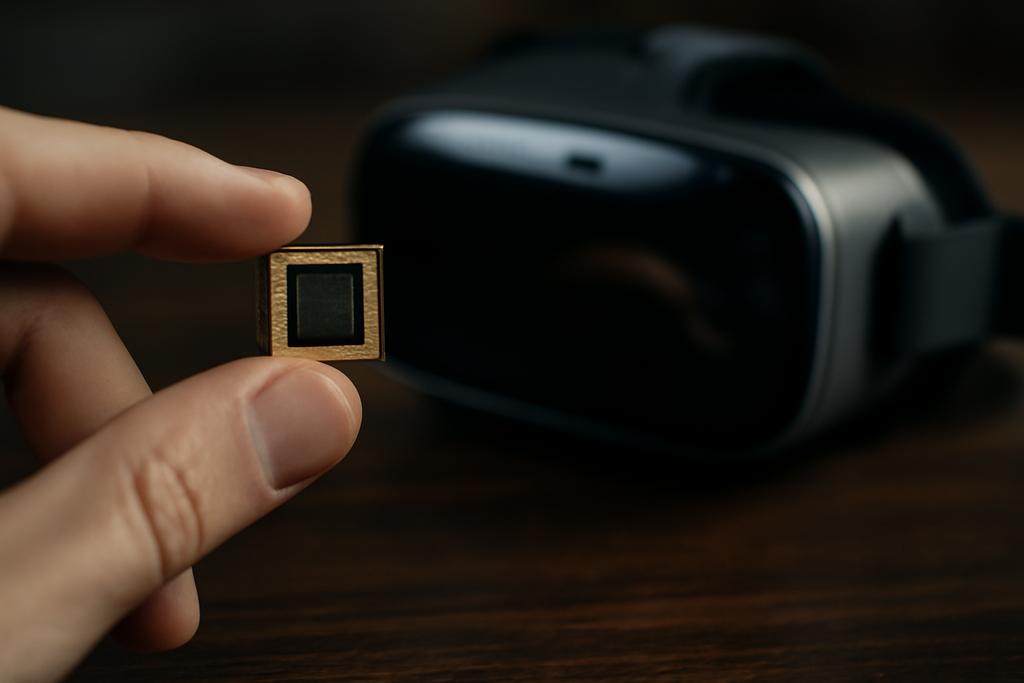A Leap Forward in Real-Time 3D Rendering
Imagine a future where augmented and virtual reality (AR/VR) aren’t clunky, laggy experiences, but seamlessly integrated parts of our everyday lives. That future is closer than you think, thanks to a groundbreaking new chip developed by researchers at the Georgia Institute of Technology and National Tsing Hua University. Their work focuses on accelerating a cutting-edge rendering technique called dynamic 3D Gaussian splatting, pushing the boundaries of what’s possible in real-time visual fidelity.
The Problem: AR/VR’s Bottleneck
Current AR/VR struggles with high-fidelity, real-time rendering. Think about it: smooth, realistic graphics require a tremendous amount of processing power. Existing methods often struggle to balance visual quality and speed, particularly in dynamic scenes – that is, scenes with moving objects. This limitation hampers the creation of truly immersive experiences.
The researchers identified four key hurdles in achieving real-time, energy-efficient dynamic 3D Gaussian splatting (3DGS) on edge devices (like the chips in your phone or VR headset):
- High DRAM Access: Loading all the data needed for rendering from the slower, power-hungry main memory (DRAM) is a major bottleneck.
- Sorting Latency: Organizing the data efficiently for rendering takes time and energy.
- Limited On-Chip Memory: The small amount of faster, on-chip memory isn’t enough to hold all the data needed for smooth processing.
- DCIM Incompatibility: Existing 3DGS operations don’t easily work with digital compute-in-memory (DCIM) technology, a promising approach to reduce energy consumption.
The Solution: A Smart Chip and Clever Algorithms
The team, led by Shimeng Yu at Georgia Tech, tackled these challenges head-on with a sophisticated algorithm-hardware co-design approach. Think of it as a perfect blend of brilliant software and equally impressive hardware. They developed a new chip and four innovative software optimizations, all working in concert to achieve unprecedented performance and efficiency:
- DRAM-Access Reduction Frustum Culling (DR-FC): This clever algorithm reduces the amount of data that needs to be loaded from DRAM by strategically pre-processing the scene and intelligently selecting what to load based on the camera’s viewpoint.
- Adaptive Tile Grouping (ATG): This optimization improves the use of the limited on-chip memory by grouping related pieces of data together, minimizing access to the slower memory.
- Adaptive Interval Initialization Bucket-Bitonic Sort (AII-Sort): AII-Sort makes the sorting process faster and more energy-efficient by using information from previous frames to predict the best way to organize the data for the current frame.
- DCIM-Friendly Dynamic 3DGS Dataflow (DD3D-Flow): This optimization carefully maps the different computational steps of 3DGS onto the DCIM architecture, allowing the chip to use this energy-efficient technology effectively.
The Results: A Stunning Breakthrough
The results are remarkable. The new chip, built using a 16nm process, achieves frame rates exceeding 200 frames per second (FPS) – a truly mind-blowing speed for high-fidelity 3D rendering – while consuming a mere 0.28 watts for static scenes and 0.63 watts for dynamic scenes. This is a significant improvement over existing solutions, demonstrating a dramatic leap in power efficiency.
Comparisons against another state-of-the-art 3D Gaussian splatting accelerator, GSCore, highlight the advantage of 3DGauCIM. While GSCore struggled to reach high frame rates on large, complex scenes, 3DGauCIM maintained its impressive speed across both static and dynamic scenarios. This signifies a significant advance in handling the computationally intensive aspects of realistic AR/VR rendering.
The Implications: A New Era of AR/VR
This research opens doors to a transformative future in AR/VR. The ability to render incredibly realistic graphics at such high frame rates and low power consumption paves the way for a multitude of applications:
- More immersive gaming experiences: Imagine games with breathtakingly realistic environments and characters that react in real-time to your actions.
- Enhanced virtual and augmented reality training simulations: From medical procedures to military exercises, highly realistic training simulations can prepare individuals for complex situations more effectively.
- More realistic remote collaboration tools: Imagine working with colleagues in a shared virtual space, with a level of realism that makes remote collaboration feel just like being in the same room.
- Improved autonomous driving systems: The enhanced ability to rapidly process visual information could lead to more reliable and safer self-driving cars.
The work of Yu and her team at Georgia Institute of Technology and National Tsing Hua University represents a significant leap forward in the field of real-time 3D rendering. Their innovative chip and algorithms could very well redefine the future of AR/VR, making it more powerful, efficient, and accessible than ever before. This is more than just a technological advancement; it’s a step towards a future where technology merges seamlessly with our reality.










